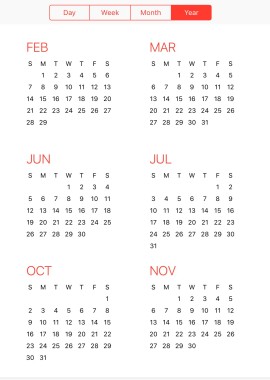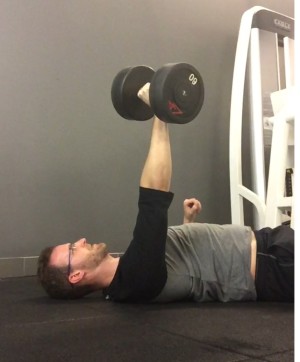Cycling, sometimes referred to as periodization, is the concept of structuring your training around different phases throughout an exercise program. Most recreational exercisers do not utilize this method although it can greatly increase gains as well as guard against injury.
Let’s start with a quick breakdown of how cycling works and then we will discuss why it is so important for optimizing your training. Exercise programs can be looked at in both short term and long term goals. Practically speaking the shortest term goal you can have would be what you want to accomplish in a single workout. You should, however, also be thinking about what you would like to accomplish for the week, the month, the year, the next ten years, or even in your lifetime. Taking these different goals and organizing them into different blocks is what cycling is.
Marathon Training As An Example Of Periodization
The most readily available example of cycling/Periodization within the recreational exercise world is marathon training. Most individuals who decide to undertake a marathon also follow a training plan that takes them from the basics up to the marathon day. The program usually looks something like this:
– An opening phase in which the runner slowly builds a base (Cycle 1)
– A middle phase that builds mileage and/or speed (Cycle 2)
– A final phase in which the mileage and intensity is scaled down, allowing the runner to recover and go into the marathon day feeling fresh and strong (Cycle 3)
The three different phases each have a different emphasis that addresses the most important factors at that moment in time. It is a good example of a simple, three cycle training program with the goal of preparing a person from the basics up to marathon day.
Cycling In The Gym
Let’s translate this concept to the typical gym-goer. When you decide to begin a fitness program the first thing you should do is clearly define an end goal. Notice that it is an end goal – there can and should be others in the future, but find one for now. Usually an end goal for my clients is to lose a certain amount of weight and to gain strength. With this information we have set up the starting point (today) and the end point (stronger and lighter) and we can set about the task of thinking of a structure for a cycled program.
As with the marathon example, the first cycle should be a beginning point for the basics. I would normally focus on movement quality and skill acquisition using lighter weights and mid to high rep schemes (10 to 20 repetitions). Cycle 2 would begin to build up the intensity. Weights would become heavier and rep schemes would be somewhere between 8 and 12 repetitions. A third cycle might then focus on a particular aspect such as heavy weight for fewer repetitions, or possibly power training. (Cardio I tend to only make recommendations on and let people do this part on their own)
What About Nutrition?
Ideally nutrition should generally align with the workout cycle. In cycle 1 deal with basics – cut out the obvious crap, work on consistency, reduce bad habits. In cycle 2 clean up whatever didn’t get fixed in cycle 1. Finally, in cycle 3, you might begin thinking about optimizing macro-nutrients, etc. Essentially, take steps from beginning to advanced just like the strength portion of the program.
Conclusion
The reason that this type of training can have such an incredibly positive effect is because the body is complex and you simply can’t work on everything that it needs all at once. Fitness is many sided. Flexibility, stability, coordination, balance, strength, body composition, endurance, agility – each of these things contributes to your health and nothing out there can work effectively on all of them at the same time. By looking at a period of time and breaking it down into pieces, you can work systematically towards the final goal.
If you really want to have a great program with optimal periodization, I recommend working with a professional. The “program” that I have provided here is very general and serves only as an example of how to think about the process. The power, and the fun, of cycling/periodization comes from the individualized process of finding the most important points and organizing them into a program.



Pingback: In Fitness, More Is Not Better | do the movement October 27, 2014
[…] And this is really the point I am trying to get at. All too often I see people at the gym doing every varying form of exercise all at once. They will do spin classes on one day, weights on the next, kickboxing on the next, circuit training after that, yoga and pilates on the weekend, and jogs in the park on nice days. Often, the person doing all of these various forms of exercise have simply added them on top of an existing routine along the way, when gains stopped happening. They may have been into group fitness, but found themselves after a time gaining weight anyway. Then a friend suggested spinning, so they began that as well. When that lost its effect, they searched for the next thing, and so on. Eventually, they ended up with a huge routine that is now a smattering of everything under the sun. While all of this may be keeping the person physically active, which I don’t intend to undervalue, it effectively takes them nowhere because it lacks specificity. Think of a pitcher who needs to work on a curve-ball. Will you have them practice every pitch they know everyday, or spend some concentrated time working on just that one pitch? The same principle applies to fitness. (I wrote more about this under What Is Cycling/Periodization?) […]
Pingback: The Beauty of Nuance - do the movement November 11, 2015
[…] What is Cycling/Periodization […]
Pingback: Shoulder Pain: Two Things To Know - do the movement February 7, 2016
[…] In order to keep shoulders healthy and to avoid any issues it is important to have good form when exercising, good posture in life, and a workout program that does not overtax muscular systems. Posture is important because it keeps the muscles of the rotator cuff balanced and free from pinching and grinding. To help understand how to maintain good shoulder mechanics learn about things like retraction, depression, elevation, and depression as well as internal and external rotation. A well balanced workout program ensures that tendons, especially highly used tendons like those of the biceps, are not overworked to the point of inflammation and tendonitis. To balance your program learn about periodization. […]
Pingback: Fitness: It's Not What You Do, But How You Do It - do the movement April 11, 2016
[…] What Is Cycling/Periodization […]
Pingback: When On Vacation Think Of Recovery - do the movement June 1, 2017
[…] nothing but rest, and that is an important part of a good exercise routine. In fitness, this rest period even has a name. It’s called a deload […]